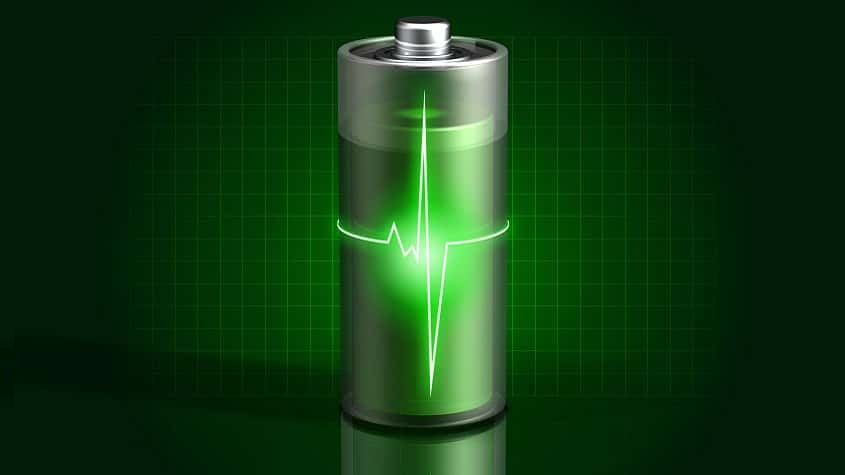Energy storage systems are an integral part of Germany’s Energiewende(“Energy Transition”) project. While the demand for energy storage is growing across Europe, Germany remains the European lead target market and the first choice for companies seeking to enter this fast developing industry.
The country stands out as a unique market, development platform and export hub.
The German Energy Revolution
The German energy storage market has experienced a massive boost in recent years. This is due in large part to Germany’s ambitious energy transition project. Greenhouse gas emissions are to be reduced by at least 80 percent (compared to 1990 levels) up until 2050. Germany will also gradually phase out all of its nuclear power plants by 2023 – and in doing so will revolutionize its energy infrastructure. Germany is already a front-runner in renewable energy development. Renewable energy sources currently produce around 32 percent of all electricity consumed in Germany. In line with the goals of the German government, this share is to be increased to at least 80 percent of electricity consumption by 2050. Solar power, onshore- and offshore wind power will be the main pillars of renewable energy production.
Grid Integration and Security
The Energiewendebrings with it huge challenges. The integration of fluctuating renewable energies into the electricity grid demands innovative storage solutions and major investment in the transmission grid. Substantial and fast-reacting storage capacities are needed to balance out short-term fluctuations. Long-term storage solutions are needed to shift loads through the seasons. Germany’s geographical makeup places restrictions on the possibility of developing new pumped storage capacity. This makes the use of new storage technologies and smart grids imperative. Energy storage systems – from small and large-scale batteries to power-to-gas technologies – will play a fundamental role in integrating renewable energy into the energy infrastructure to help maintain grid security.
Control Power Market
Large battery systems are playing an increasingly significant role in integrating and balancing large amounts of energy from wind and solar plants in real time. Fast reaction times mean that batteries are ideally suited to providing control power to stabilize grid frequency. The German and European control power markets are attractive for large battery-system manufacturers and operators. Around 1,250 MW of primary control power is traded in the coupled German, Belgian, Austrian, Dutch, French, and Swiss markets with around 3,000 MW in Europe. Prices for primary control power are determined through an auction system with individual prices varying accordingly. In the five years up to 2017, the mean weekly price for primary control power was around EUR 3,070 per MW, with accepted bids ranging on average from EUR 2,800 to 3,500 per MW. Assuming that the minimum attainable price drops to EUR 2,500 per MW, a battery system participating exclusively in the control power market could effectively recoup capital expenditure at system prices below EUR 870 EUR per kWh. This calculation is based on a capital interest rate of five percent, operating costs of two percent, and an amortization period of 10 years.
New Trends and Developments
Further large battery system applications include uninterrupted power supply and black start capabilities. In recent years these have been used as a buffer for PV and wind generators to offset quick shutdowns in the event of surplus energy in the grid. New trends in the large-scale battery segment include the development of district storage and rental and leasing models. District storage involves storing surplus electricity from private local generation plants, such as rooftop PV systems, in a central battery. The stored electricity is released to the end consumer as soon as energy demand exceeds electricity generation levels. This concept is being tested as part of several projects currently using a 100 kW battery at 40 households in the German community of Walldorf. Car manufacturers are also entering the stationary battery market, building storage systems from retired car batteries. In cooperation with other partners, Daimler has launched a 13 MW “second use” project in the German town of Lünen, and a 15 MW project in Hanover. BMW, Vattenfall and Bosch have also set up a 2 MW testing facility, using 2,600 battery modules from electric cars.
Energy Storage Building Blocks – E-Mobility
Electric vehicles play an important role in the success of the energy transition and integration of renewable energies into the grid. They can become zero-emission vehicles using renewable electricity sources. As such, fuel-cell cars that run on green hydrogen are also helping contribute to reach climate goals in the transportation sector. Furthermore, through energy storage innovations in the transportation and automotive sectors, electric vehicles can serve as storage units to balance out fluctuating electricity levels in the future.
E-Mobility: Central Pillar of the Energy Transition
The transport industry – alongside the energy and industry sectors – is one of the world’s biggest producers of greenhouse gases. Within Europe and Germany, it is responsible for around one fifth of CO2 emissions. E-mobility represents a central pillar of Germany’s energy transition. At the start of 2017, there were around 75,000 electric vehicles – supported by an infrastructure of around 6,000 AC and more than 150 DC charging stations – on German roads. In 2016, around 25,000 new e-vehicles were registered, equivalent to an increase of seven percent compared to 2015. The National Electromobility Development Plan has set a target of one million fully and partially battery-powered electric vehicles by 2020 as Germany seeks to establish itself as a lead market and supplier for e-mobility solutions. In order to achieve this ambitious objective, the German federal government introduced a purchase bonus of EUR 4,000 for BEVs and EUR 3,000 for PHEV. The total incentive volume of EUR 1.2 billion is split equally between car OEMs and the government. Additionally, the government will invest a further EUR 300 million into the expansion of the public charging infrastructure (including 5,000 new DC charging stations) up to 2020.
The Battery: The Key to Electric Mobility
The battery represents the key component in an electrified drive train. The battery system – comprising the cells, battery management system, electrical and sensor systems, safety elements, cooling periphery, and housing – determinesvehicle efficiency and counts as the single vehicle element with the greatest wealth creation share (direct share of valueadded of up to 40 percent).
Energy Self-Sufficiency
The German population supports the goals of the energy transition. Improved energy self-sufficiency in private households and commercial operations enjoys widespread acceptance. More than 1.6 million solar power plants with a total capacity of more than 41 GWp (2016) have been installed in Germany over the past 25 years. The majority are solar power plants with a capacity below 30 kWp installed on residential rooftops. They build the foundation for the promising market development of small energy storage systems. On average, the own-consumption share of PV-generated electricity can be increased from 35 percent to more than 70 percent with the use of a battery.
The PV Storage Business Case
With falling PV system and battery costs, the business case for storage is gathering pace. By the end of 2016, somewhere in the region of 50,000 households and commercial operations had already invested in PV battery systems. The market is forecast to experience a massive deployment of energy storage systems by 2017 as a response to decreasing battery costs. According to Germany Trade & Invest research, PV battery systems could reach an annual installation volume of around 50,000 systems by 2020.
Retrofit Storage Installations
When the 20-year guaranteed feed-in tariff for older installations is phased out, retrofit installations will represent an additional driver for the household energy storage market. More than one million households already have a PV system on their roof and could be potential customers for retrofit batteries in the coming decade. The federal government makes PV battery system investment very attractive through the provision of unique incentives including low-interest loans and investment grants. A growing number of federal states in Germany also offer regional incentives, making investment in battery systems even more appealing.
Research and Development in Energy Storage
Germany boasts a dense landscape of world-leading research institutes and universities active in the energy storage sector. They work closely together with industry to bring innovations to the market. The federal government supports research and development in the energy storage, hydrogen, fuel cell, and electric vehicle sectors. Public research and development incentives for EV and stationary battery research amount to between EUR 80 million and EUR 85 million every year.
Business Opportunities in a Pioneer Market
As the European lead market in the energy transition age, Germany provides the opportunity for companies to develop, test, define and market new energy storage solutions. Innovative sales strategies, system configurations, and integration processes are intrinsic components of the specialist expertise currently being developed in Germany. The country actively welcomes international enterprises seeking to participate in the changing energy market landscape.
 Tobias Rothacher is Senior Manager for Energy, Environment & Resources at Germany Trade and Invest (GTAI) and has a special focus on Photovoltaics, Energy Storage and Bio-energy technologies.GTAI is a consultancy wholly owned by the German Federal Ministry for Economic Affairs and Energy. Headquartered in Berlin, he and his colleagues advice all investors interested in the field of Renewable Energy, Energy Efficiency and Environmental Technologies.Prior to his position at GTAI, Rothacher worked as a Business Development and Project Development Manager for the Conergy group in the Asia Pacific region. He has an academic background in Business Administration and Engineering and received his higher education in Germany and Canada.
Tobias Rothacher is Senior Manager for Energy, Environment & Resources at Germany Trade and Invest (GTAI) and has a special focus on Photovoltaics, Energy Storage and Bio-energy technologies.GTAI is a consultancy wholly owned by the German Federal Ministry for Economic Affairs and Energy. Headquartered in Berlin, he and his colleagues advice all investors interested in the field of Renewable Energy, Energy Efficiency and Environmental Technologies.Prior to his position at GTAI, Rothacher worked as a Business Development and Project Development Manager for the Conergy group in the Asia Pacific region. He has an academic background in Business Administration and Engineering and received his higher education in Germany and Canada.
Germany Trade and Invest
Germany Trade & Invest is the economic development agency of the Federal Republic of Germany. The organization advises foreign companies looking to expand their business activities in the German market. It provides information on foreign trade to German companies that seek to enter into foreign markets. All inquiries relating to Germany as a business and investment location are treated confidentially. All investment services are available at no charge.




































